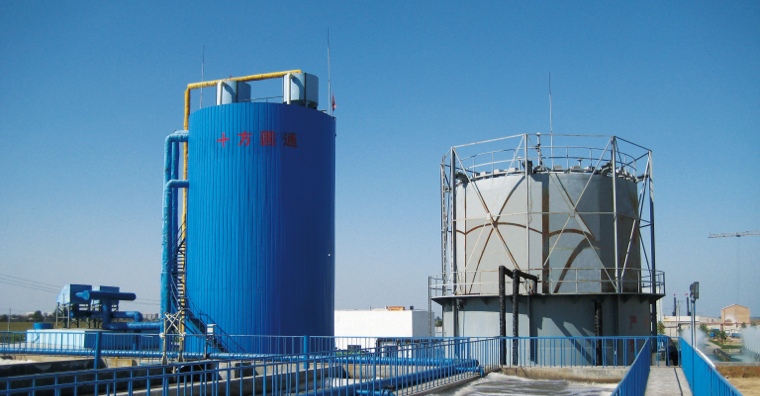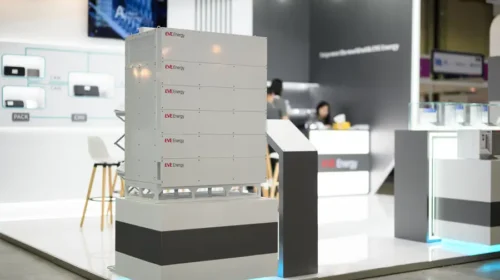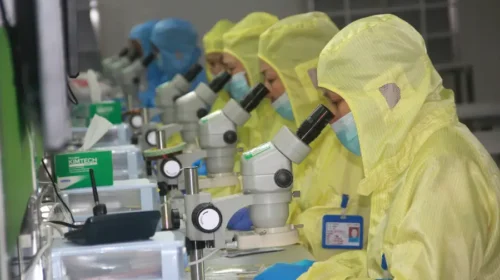Shandong Hi-Speed stock soars, then plunges in mystery power play

The data center and green power investor’s shares surged more than 200% in the year through July, but gave back all those gains and more with a nearly 80% plunge last Friday
Key Takeaways:
- Shandong Hi-Speed scrambled to defend its stock by buying back shares after a sudden plunge last Friday wiped out big gains from the previous two months
- Just before the plunge, the Hong Kong securities regulator warned investors that a small number of investors own most of the company’s stock
By Warren Yang
What a difference two months make.
Near the end of July, Shandong Hi-Speed Holdings Group Ltd. (0412.HK) issued a press release to celebrate its market capitalization hitting the HK$100 billion ($12.9 billion) mark after its share price surged more than 200% since the start of the year. Fast-forward to last Friday, when the investment firm’s stock plunged almost 80% in a single day in unusually heavy trading, prompting it to buy back shares in a desperate attempt to defend their value.
After all the gyrations, the stock is roughly back to where it started the year, down about 18% since January.
“The board believes that the current share price of the company does not fully reflect its long-term investment value, core business competitiveness and future growth potential,” Shandong Hi-Speed said in a statement announcing its purchases. “The share buy-back under the prevailing market conditions demonstrates the company’s full confidence in its own business outlook and prospects, and this decision is made based on the company’s strong recognition of its own value and its commitment to all shareholders, which will ultimately benefit the company and create value for shareholders.”
The company announced the move a day after Hong Kong’s Securities and Futures Commission warned investors that a small number of shareholders own more than 90% of Shandong Hi-Speed’s issued stock, which means a few big trades can send the company’s share price fluctuating widely. It’s not clear why the regulator looked into the company’s shareholding structure, but it did highlight that its shares had risen more than 150% since April. Regardless, the note’s cautionary tone was probably ominous enough to trigger the massive selloff.
Although the commission didn’t indicate any wrongdoing or irregularity around the rapid ascent of Shandong Hi-Speed’s shares this year, it was quite mysterious. The company’s financial performance is decent, though not spectacular.
Its revenue rose 11% year-on-year in 2024 to 5.6 billion yuan ($787 million) and its net profit increased by an even better 40% to 693 million yuan. But this kind of earnings growth is hardly powerful enough to spark such a big jump in a company’s share price so quickly. Also, Shandong Hi-Speed’s stock rally started in earnest in May, almost two months after it released its latest annual results. In August, it reported its revenue slipped in the first half of the year, although its net profit for the period jumped, mostly thanks to valuation gains for financial assets.
Perhaps the most notable piece of positive news on the company in the first half was an increased vote of confidence from Fitch Ratings, one of the world’s top credit rating agencies. At the end of May, Fitch upgraded Shandong Hi-Speed, along with its Shandong province-owned parent group, citing stronger government support. But the company’s share price had begun rising long before that.
‘Dazzling success’
So, none of this really explains why Shandong Hi-Speed shares soared. In its July press release as it reached the HK$100 billion market cap milestone, the company attributed its “dazzling success” to its strategy of “smart investing” in new energy and computing power plants. That must have left reasonable investors still scratching their heads.
Those two areas are part of the company’s industrial investment segment, Shandong Hi-Speed’s primary revenue source. The company’s focus on new energy and computing power isn’t so surprising, given that’s where money flocks in China these days and the company’s government ties. Beijing is actively pushing for the development of clean energy sources and emerging technologies like artificial intelligence (AI), which consumes huge amounts of power, often necessitating separate power plants for the data centers that host many AI applications.
Shandong Hi-Speed was founded in the early 1990s, originally as China New Financial Group, and took on its current form in 2022, some five years after Shandong Hi-Speed Group acquired the company.
After taking on its new identity in 2022, Shandong Hi-Speed wasted no time in doing business. That year, it acquired a clean energy developer that has since become Shandong Hi-Speed New Energy Group Ltd. (1250.HK; 000803.SZ), which currently has new energy power projects in more than 20 provinces across China. And the following year, Shandong Hi-Speed made a $299 million investment in VNET Group (VNET.US), one of the three largest private data-center operators in China.
Those two assets appear to be Shandong Hi-Speed’s key pillars that underpin “an industrial ecosystem of electricity and computing power,” as the company calls its business in its latest annual earnings release. Yet neither of its big investments is doing particularly well. The renewable energy company’s revenue shrank in the first half of this year, while VNET plunged into the red in the second quarter.
But most of this is just the ups-and-downs of doing business in any emerging sector, and isn’t a reasonable explanation for the big movements in Shandong Hi-Speed’s share price. That said, we should point out that data center stocks have been hot this year on the AI boom, with VNET’s shares up 86% since January and rival GDS (GDS.US; 9698.hK) up 60%. But neither of those comes close to Shandong High-Speed’s earlier gains.
The company may have attracted attention from speculative investors looking for a new meme stock — only to attract regulators’ attention. Regardless, the stock’s gyrations only confirm the old saying, “What goes up must come down.”
Shandong Hi-Speed spent a substantial sum to protect its stock. Last Friday, it repurchased 3.7 million shares, which probably cost it well over $1 million. The company’s stock rose nearly 30% that day.
While Shandong Hi-Speed shares are now worth a fraction of their value less than a week ago, they still trade at a price-to-earnings (P/E) ratio of 51, which would be a lofty valuation even for a fast-growing company with a bright future. But both renewable energy generators and data center operators in China are battling excess supply, which dims Shandong Hi-Speed’s prospects since those are its primary focus areas.
But logic doesn’t seem to have much to do with the movements in the company’s share price. After all the movement, the stock has come back down to earth. And regulators’ intervention, which some may see as a veiled warning to speculators, could provide some stability to the stock for anyone willing to bet on it going forward.
To subscribe to Bamboo Works weekly free newsletter, click here






